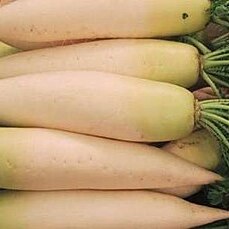Herbs annual or biennial, scabrous or hispid, rarely glabrous. Trichomes simple. Stems erect or prostrate, simple or branched. Basal leaves petiolate, rosulate or not, simple, dentate, lyrate, pinnatifid, or pinnatisect. Cauline leaves similar to basal, petiolate or uppermost subsessile. Racemes several flowered, ebracteate, elongated in fruit. Fruiting pedicels divaricate or reflexed. Sepals oblong or linear, erect, base of lateral pair saccate. Petals yellow, white, pink, or purple, usually with darker veins; blade obovate or suborbicular, apex rounded or emarginate; claw subequaling or longer than sepals. Stamens 6, strongly tetradynamous; filaments not dilated at base; anthers oblong or oblong-linear, obtuse at apex. Nectar glands 4; median pair oblong; lateral pair prismatic. Ovules 2-22 per ovary. Fruit indehiscent siliques or silicles, often lomentaceous, breaking into 1-seeded units, linear, oblong, ovoid, ellipsoid, or lanceolate, terete or polygonal, sessile, segmented; valvular segment rudimentary, seedless, as thick as or slightly thicker than pedicel, or absent; terminal segment few to many seeded, wingless, corky, smooth or strongly torulose or moniliform, ribbed longitudinally or not ribbed, antrorsely or retrorsely scabrous, or glabrous; replum absent; septum absent; style prominent or obsolete; stigma capitate, entire or slightly 2-lobed. Seeds uniseriate, wingless, oblong, ovoid, or globose, plump; seed coat minutely reticulate, not mucilaginous when wetted; cotyledons conduplicate.
Annual to perennial herbs, ± hispid with simple hairs. Leaves lyrate-pinnatipartite to pinnatifid. Racemes terminal, ebracteate, ± corymbiform, with many rather large flowers, in fruit elongate, lax. Sepals erect, the inner larger and somewhat saccate. Petals white, yellow or ± violet, clawed. Stamens 6; filaments linear; anthers linear, obtuse. Lateral nectaries very small, median semiglobose or filiform. Ovary biarticulate; lower segment very short, upper segment long with 2–20 ovules; stigma capitate. Fruit a transversely articulate siliqua; lower segment usually stalk-like, very short, seedless; upper segment indehiscent, cylindrical, in transverse section circular, ± constricted between the seeds, sometimes lomentaceous (i.e. breaking up into 1-seeded portions); beak narrow, seedless. Seeds ovoid to globose, reticulate to smooth.
Annual to perennial herb, ± hispid with simple hairs. Leaves lyrate-pinnati-partite to pinnatifid. Racemes terminal, ebracteate, ± corymbiform, with many rather large flowers, in fruit elongate, lax. Sepals erect, the inner larger and somewhat saccate. Petals white, yellow or ± violet, clawed. Stamens 6; filaments linear; anthers linear, obtuse. Lateral nectaries very small, median semi-globose or filiform. Ovary biarticulate; lower segment very short, upper segment long with 2-20 ovules; stigma capitate. Fruit a transversely articulate Siliqua; lower segment usually stalk-like, very short, seedless; upper segment in-dehiscent, cylindrical, in transverse section circular, ± constricted between the seeds, sometimes lomentaceous; beak narrow, seedless. Seeds ovoid to globose, reticulate to smooth.
Annual to perennial taprooted herbs. Hairs simple, bristly. Stems erect, leafy. Lvs lyrate-pinnate, becoming simple above; margins dentate to serrate. Racemes ebracteate. Sepals erect, the inner saccate at base. Petals white, yellow, brownish, pink, or purple, usually with mauve veins. Stamens 6, without appendages. Lateral nectaries 2, inside bases of lateral stamens; median nectaries 2, cylindric, outside bases of median stamens. Stigma sessile, capitate or somewhat 2-lobed. Silique indehiscent, cylindric or ovoid, veined or not, inflated and corky or divided into 1-seeded segments which break off when mature; valvar portion stalklike, slender, seedless. Seeds ovoid or spherical, brownish, not winged, 1.5-3 mm long.
Sep erect, obtuse, somewhat saccate at base; pet large, yellow, pink-purple or white, broadly obovate, abruptly narrowed to the claw; ovary cylindric; style elongate, scarcely narrower than the ovary; stigma capitate; fr long-beaked, transversely divided into 2 members, the lower small and usually seedless or abortive, the upper indehiscent, its 2–10 large seeds in a single row, separated by constrictions or spongy cross-partitions; coarse annual or biennial herbs, with at least the lower lvs pinnatifid; pubescence of simple hairs. 3, w. Eurasia, Mediterranean.
Annual to perennial herbs. lnflorescence a terminal panicle, without bracts. Sepals erect, the lateral ones slightly saccate. Petals long-clawed. Stamens 6. Nectariferous glands 4, a large gland inside base of short stamens, a small cylindrical (rudimentary) gland outside base of long stamens. Siliqua indehiscent and cylindrical, or constricted between seeds and articulating at constriction; beaked; beak seedless, slender, conical; valves ribbed. Seeds globular, pitted. Cotyledons conduplicate; radicle incumbent.
Fruit jointed, the lowest joint (corresponding to the valves of a typical silique) short, slender, seedless, the upper joints containing the seeds, cylindric or moniliform and usually breaking transversely when ripe into 1-seeded joints, apex narrowed into a seedless beak.
Annual, biennial or perennial herbs with lyrate-pinnatifid, somewhat glaucous leaves.
Seeds subspherical or ovoid, reddish-brown, pitted.
Flowers in terminal, ebracteate racemes.
Petals 4, unguiculate.
Sepals erect.
Stamens 6.


